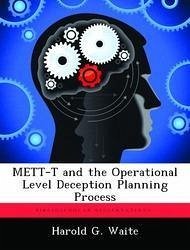Nicht lieferbar

Appreciation for Vulnerability to Deception at the Operational Level
Versandkostenfrei!
Nicht lieferbar
Historically, the army that concentrates adequate deception effort against specific enemy vulnerabilities to deception has usually been successful in this operation. The army that neglects its potential for vulnerability to deception is often not successful, when an opponent chooses to exploit that vulnerability. The United States Army has recently renewed its interest in deception as a proactive means of gaining surprise. More recently, the issue of deception at the operational level has received attention. The Soviet Union on the other hand has steadily maintained and increased an emphasis i...
Historically, the army that concentrates adequate deception effort against specific enemy vulnerabilities to deception has usually been successful in this operation. The army that neglects its potential for vulnerability to deception is often not successful, when an opponent chooses to exploit that vulnerability. The United States Army has recently renewed its interest in deception as a proactive means of gaining surprise. More recently, the issue of deception at the operational level has received attention. The Soviet Union on the other hand has steadily maintained and increased an emphasis in this area since World War Two. Applying this historical condition to the apparent imbalance in developed deception doctrine, the operational planner becomes concerned, if not alarmed, at the potential for U.S. vulnerability to deception at the operational level. This study reviews historical examples of vulnerability to deception. It examines the Soviet concept of deception, or maskirovka, and the corresponding U.S. progress in developing organizations and doctrine for deception. And filtered through the screen of modern warfare conditions, historical vulnerabilities are compared to U.S. conditions to determine current applicability of those vulnerabilities. From this examination the study derives potential U.S. vulnerabilities to deception at the operational level. Having proposed these vulnerabilities it examines implications for training, doctrine, and planning of current operations.












